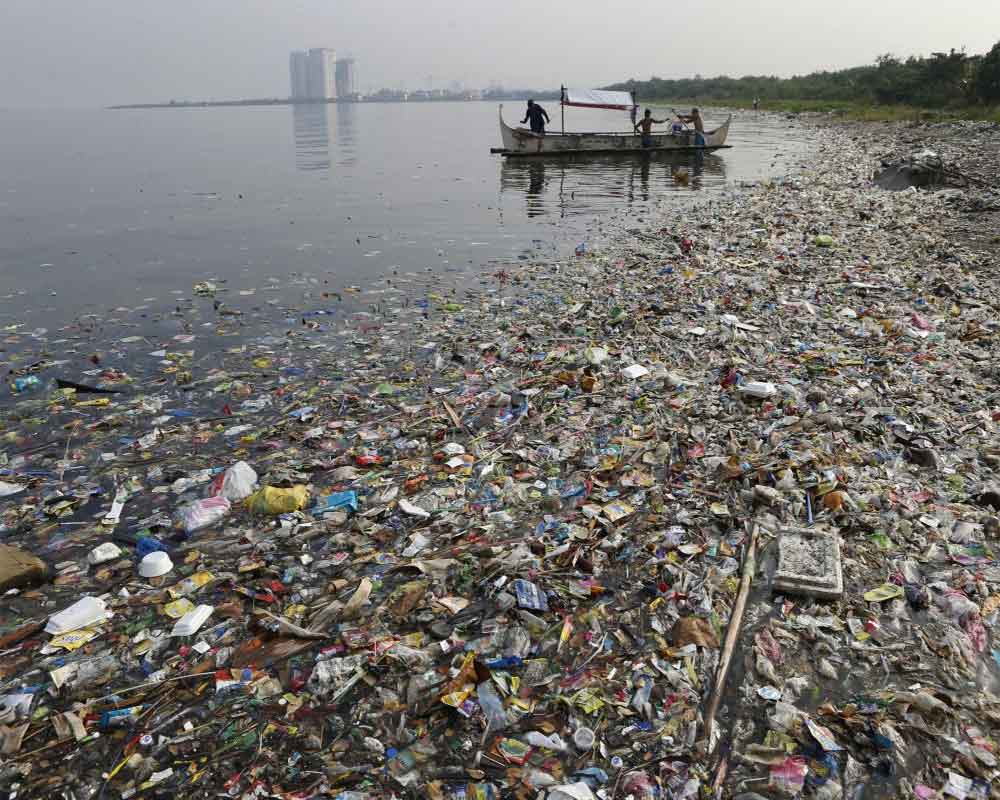Indian Ocean is the world's biggest dumping ground for plastic waste, but where the trash ultimately ends up has remained a mystery, scientists say.
According to researchers from the University of Western Australia (UWA), little research had been done to measure and track plastic waste in the Indian Ocean.
The team found that unique characteristics of the southern Indian Ocean transport floating plastics towards the western side of the ocean, where it leaks past South Africa into the South Atlantic Ocean.
"Because of the Asian monsoon system, the southeast trade winds in the southern Indian Ocean are stronger than the trade winds in the Pacific and Atlantic Oceans," said Mirjam van der Mheen, a PhD student at UWA.
"These strong winds push floating plastic material further to the west in the southern Indian Ocean than they do in the other oceans," she said in a statement.
In the northern Indian Ocean, the simulations showed that there may be an accumulation in the Bay of Bengal. It is also most likely that floating plastics will ultimately end up on beaches, transported by the reversing monsoon winds and currents, researchers said.
"Our study shows that the atmospheric and oceanic attributes of the Indian Ocean are different to other ocean basins and that there may not be a concentrated garbage patch. Therefore the mystery of the missing plastic is even greater in the Indian Ocean," said van der Mheen.
"As technology to remotely track plastics doesn't yet exist, we need to use indirect ways to determine the fate of plastic in the Indian Ocean," said Chari Pattiaratchi, from UWA.
In a research paper published in the Journal of Geophysical Research: Oceans, researchers used information gathered from more than 22,000 satellite tracked surface drifting buoys that had been released around all the world's oceans since 1979, to simulate pathways of plastic waste globally with an emphasis on the Indian Ocean.
Pattiaratchi said every year, up to 15 million tonnes of plastic waste was estimated to make its way into the ocean through coastlines and rivers.
"This amount is expected to double by 2025," he said.
"Some of this waste sinks in the ocean, some is washed up on beaches and some floats on the ocean surface, transported by the ocean currents. As plastic materials are extremely durable, floating plastic waste can travel great distances in the ocean," he added.
Pattiaratchi said some floating plastics were known to collect in the centre of subtropical gyres (large systems of circulating ocean currents) in 'garbage patches'.
"Here, the ocean currents converge at the centre of the gyre and sink. However, the floating plastic material remains at the ocean surface, allowing it to concentrate in these regions," he said.
The best known of these garbage patches is the Great Pacific Garbage Patch, which contains about 80,000 tonnes of plastic waste.
Similar but smaller patches exist in the North and South Atlantic Oceans and the South Pacific Ocean. In total, it is estimated that only one per cent of all plastic waste that enters the ocean is trapped in the garbage patches.
It is still a mystery what happens to the remaining 99 per cent of plastic waste that has entered the ocean, according to Pattiaratchi.


























